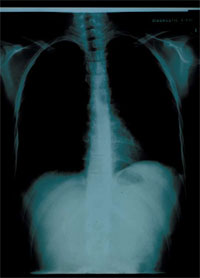Starting the Conversation
As this booklet has shown, marijuana can pose a particular threat to the health and well-being of children and adolescents at a critical point in their lives—when they are growing, learning, maturing, and laying the foundation for their adult years. As a parent, your children look to you for help and guidance in working out problems and in making decisions, including the decision not to use drugs. Even if you have used drugs in the past, you can have an open conversation about the dangers. Divulging past drug use is an individual decision, but having used drugs should not prevent you from talking to your child about the dangers of drug use. In fact, experience can better equip us to teach others, including drawing on the value of possible mistakes.
 Fact: Marijuana is addictive. About 1 in 11 people who try it, and 25-50 percent of those who use it every day, become addicted to marijuana.
Fact: Marijuana is addictive. About 1 in 11 people who try it, and 25-50 percent of those who use it every day, become addicted to marijuana.Greater acceptance of marijuana use, compared with use of other illicit drugs, continues to underlie divergent opinions about its dangers, illegality, and potential value. Indeed, the ongoing public debate about smoking marijuana to ameliorate a wide range of ills—from pain and nausea to anxiety and sleep disturbances—may complicate your discussion. However, as you have read, marijuana also has liabilities and as a medicinal formulation is not ideal. It contains numerous other compounds with unknown health effects; plus, smoking as a delivery method clearly is not optimal for lung health. Scientists continue to investigate the medicinal properties of THC and other cannabinoids to better evaluate and harness their ability to help patients suffering from a broad range of conditions, while avoiding the adverse effects of smoked marijuana.
 Fact: Marijuana users may have many of the same respiratory problems that tobacco smokers have, such as chronic cough and more frequent chest colds.
Fact: Marijuana users may have many of the same respiratory problems that tobacco smokers have, such as chronic cough and more frequent chest colds.Meanwhile, marijuana use can be particularly dangerous for adolescents and can alter the trajectory of a young life, diminishing a person's full potential. And that is reason enough to have this sometimes difficult conversation with your children. We hope this booklet can serve as a catalyst and helpful guide to beginning the dialogue and, more importantly, continuing it and keeping the channels of communication open.


